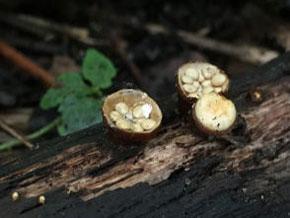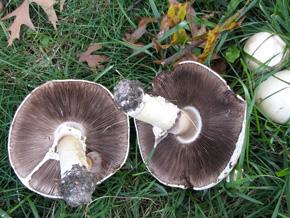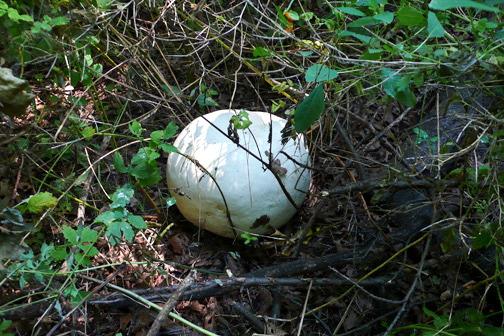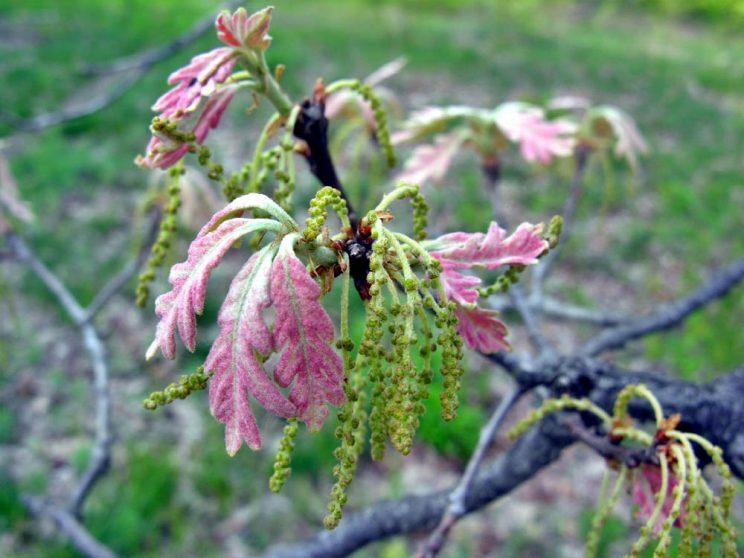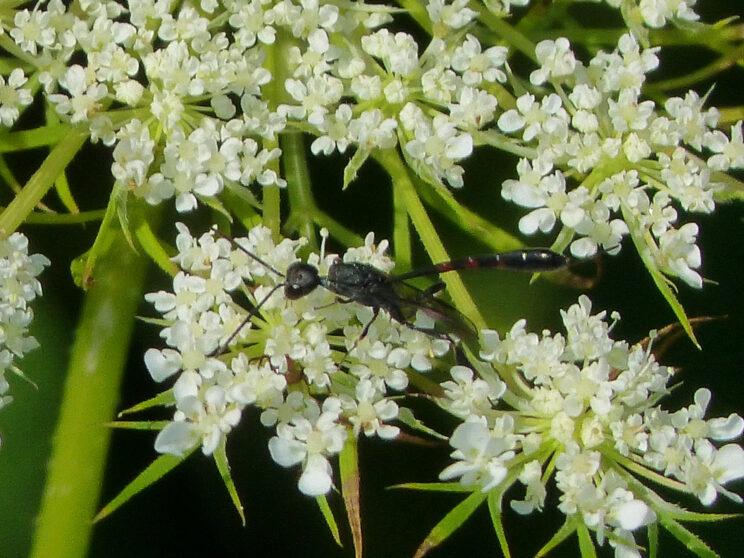Mushrooms and other organisms such as slime molds are neither plants nor animals, but rather belong to a kingdom of their own: Fungi.
Bird's Nest Fungus
This tiny fungus is Crucibulum laeve, Bird's Nest Fungus. Those 'eggs' are tiny capsules called peridioles filled with spores. A falling raindrop splashes the peridioles through the air. Once they land on nearby vegetation they may release their spores in the air or be accidentally eaten by grazing herbivores who can transport the spores via their stomachs to a new place. Another totally appropriate name for this type of fungus is 'splash cups'.
Source: High Park Nature Centre newsletter, Aug. 30, 2018
Pigskin Poison Puffball (Scleroderma citrinum)
The Pigskin Poison Puffball (or Common Earthball) is a mycorrhizal fungi, meaning it has a symbiotic relationship with the trees in the forest. The fungi connects with the roots of the trees and exchanges water and minerals in return for carbohydrates. Both the tree and the fungi benefit from this relationship.
This fungi has quite the name, so let’s break it down! The “Pigskin” refers to the fungus’ outer surface, which is yellow-brown and has a scaly texture reminiscent of a football (American style, often called a “pigskin”). As for “Poison”, there have been some conflicting reports about whether or not this fungus is truly poisonous. However, it is generally regarded as inedible, largely due to the toxins it contains.
So what about the word “Puffball”? well, once the fungi reaches maturity, the skin of the fruit body will rupture leaving a large and odd shaped opening. From this opening, the spores inside (which have a dusty consistency) can be dispersed by the rain, the wind, or by a group of kids with the High Park Nature Centre, who are excited to see the small and dark puffs of spores shoot out of the fungi.
Source: High Park Nature Centre blog August 13, 2019, article by Haya Aldoori.
Sources
See also
- Mycological Society of Toronto
- Mushrooms of Toronto. Toronto Biodiversity Booklet Series

